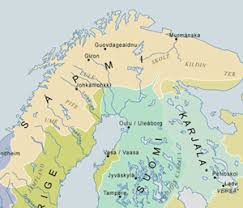 | 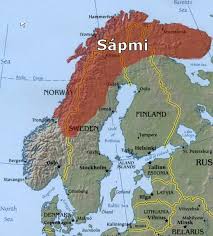 | 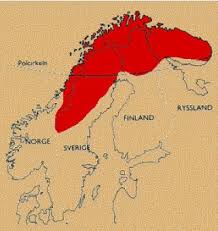 | 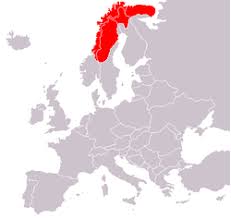 | ||||||||||||||||||||||||||||||||||
and control of Sapmi, 321 × 341 - 38 k - jpg utexas.edu | De Wikipedia, la enciclopedia 250 × 237 - 31 k - png es.wikipedia.org | ||||||||||||||||||||||||||||||||||||
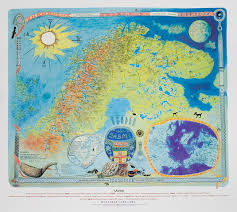 | 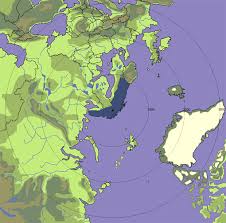 | 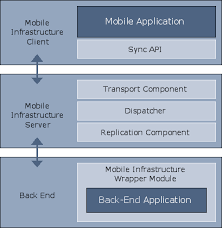 | |||||||||||||||||||||||||||||||||||
Sápmi KS Postboks 243 354 × 378 - 51 k - jpg eng.sapmi.no | Arctic Sápmi Map 510 × 503 - 272 k - jpg 2008.polarhusky.com | ||||||||||||||||||||||||||||||||||||
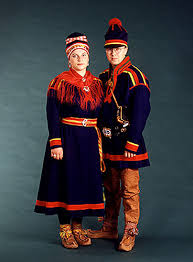 | 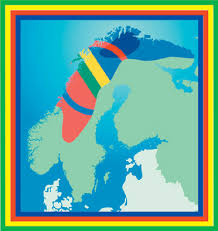 | 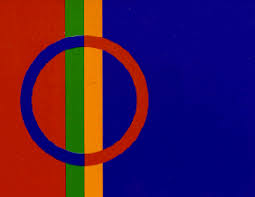 | 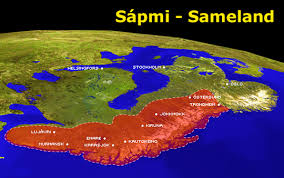 | ||||||||||||||||||||||||||||||||||
6 february in 1917 the first 372 × 395 - 106 k - jpg twcenter.net | Sápmi viewed from the 540 × 338 - 178 k - jpg eng.samer.se | ||||||||||||||||||||||||||||||||||||
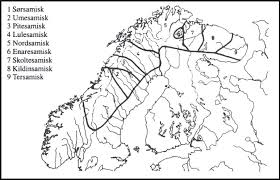 | 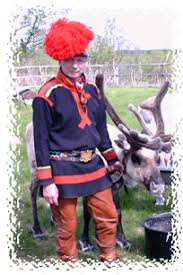 | 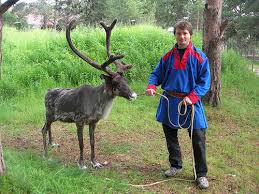 | 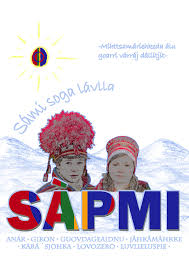 | ||||||||||||||||||||||||||||||||||
Language · Geography 3627 × 2332 - 2442 k - jpg mpi.nl | Sápmi, samernas land 204 × 306 - 49 k - jpg rensjon.com | Sapmi 600 × 849 - 244 k - jpg acker-ullman.blogslivehost.in | |||||||||||||||||||||||||||||||||||
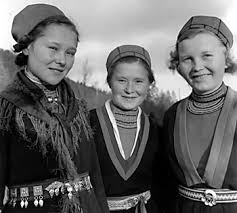 | 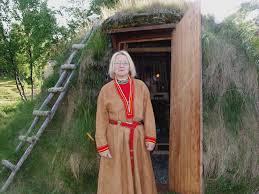 | 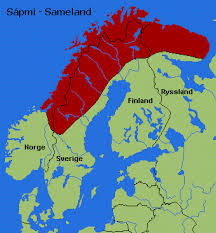 |  | ||||||||||||||||||||||||||||||||||
different parts of 350 × 314 - 24 k - jpg eng.samer.se Buscar imágenes similares Sápmi (area)From Wikipedia, the free encyclopedia
Sápmi is the name of the cultural region traditionally inhabited by the Sámi people. Sápmi is located in Northern Europe and includes the northern parts of Fennoscandia. The region stretches over four countries: Norway, Sweden, Finland, and Russia.[1] Sápmi is the name in North Sámi, while the Julev Sámi name is Sábme and the South Sámi name is Saemie. In Norwegian and Swedish the term Sameland is often used. It is frequently mistaken for being exclusively synonymous with the province of Swedish Lapland (see Etymology). With the fall of the Soviet Union and increasing internationalization, cross-border co-operation is becoming more important, and existing state borders less important both for the Sámi indigenous population and non-Sámi inhabitants—the latter constituting the majority population of the region. Russians and Norwegians are the most numerous groups, and the Sámi make up only a small minority of about 5%.[2] No political organization advocates secession, though several groups desire more territorial autonomy and/or more self-determination for the region's indigenous population. The region has its own football team, the Sámi Spábbáčiekčanlihttu, that plays in the NF-Board, won the 2006 Viva World Cup and hosted the 2008 event.
[edit] EtymologySápmi (and corresponding terms in other Sámi languages) refers to both the Sámi land and the Sámi people. In fact, the word "Sámi" is only the accusative-genitive form of the noun "Sápmi"--making the nation's name (Sámi olbmot) simply mean "people of Sápmi." The source of the word is speculated to be related to the Baltic word *žēmē that simply means "land".[3] In history of texts and the Swedish names "Lappmarken" or may occur, and also the Norwegian name "Finnmark" or "Finnmork".[4] Originally these two names did refer to the entire Sápmi, but subsequently became applied to areas exclusively inhabited by the Sámi and today they are names of provinces that only constitute parts of Sápmi. [edit] Geography[edit] LandscapeThe largest part of Sápmi lies north of the Arctic Circle. The western portion is an area of fjords, deep valleys, glaciers, and mountains, the highest point being Mount Kebnekaise (2,111 m/6,926 ft), in Swedish Lapland. The part of Sápmi falling on the Swedish side of the border is characterized by great rivers running from the northwest to the southeast. From the Norwegian province of Finnmark and eastwards, the terrain is that of a low plateau that contains many marshes and lakes, the largest of which is Lake Inari in Finnish Lapland. The extreme northeastern section lies within the tundra region, but it does not have permafrost. [edit] ClimateThe climate is subarctic and vegetation is sparse, except in the densely forested southern portion. The mountainous west coast has significantly milder winters and more precipitation than the large areas east of the mountain chain. North of the Arctic Circle polar night characterize the winter season and midnight sun the summer season—both phenomena are longer the further north you go. Traditionally, the Sámi divide the year in eight seasons instead of four. [edit] Natural resourcesSápmi contains valuable mineral deposits, particularly iron ore in Sweden, copper in Norway, and nickel and apatite in Russia. Reindeer, wolf, bear, and sea and land birds are the main forms of animal life, in addition to a myriad of insects in the short summer. Sea and river fisheries abound in the region. Steamers are operated on some of the lakes, and many ports are ice-free throughout the year. All ports along the Norwegian Sea in the west and the Barents Sea in the north east to Murmansk are ice-free all year. The Gulf of Bothnia usually freezes over in winter. The ocean floor to the north and west of Sápmi has great deposits of oil and gas. [edit] Cultural subdivisions[edit] East SápmiEast Sápmi consists of the Kola peninsula and the Lake Inari region, and is home to the eastern Sámi languages. While being the most heavily populated part of Sápmi, this is also the region where the indigenous population and their culture is weakest. Corresponds to the regions marked 6. - 9. on the map below. [edit] Central SápmiCentral Sápmi consists of the western part of Finland's Sámi Domicile Area, the parts of Norway north of the Saltfjellet mountains and areas on the Swedish side corresponding to this. Central Sápmi is the region where Sámi culture is strongest, and home to North Sámi - the most vital of the Sámi languages. In the southernmost part of this sub-region, however, Sámi culture is rather weak - this is the home of the moribound Bithun Sámi language. The areas around the Tysfjord fjord in Norway and the river Lule in Sweden is home to the Julev Sámi language, one of the more vital groups. Corresponds to the regions marked 3. - 5. on the map below. [edit] South SápmiSouth Sápmi consists of the areas south of Saltfjellet and corresponding areas in Sweden, and is home to the southern languages. In this area Sámi culture is mostly visible on the inland, and the languages are spoken by few. Corresponds to the regions marked 1 and 2 on the map below plus Dalarna County to the south east of region 1 in Sweden. [edit] LaplandThe inner parts of Sápmi are often referred to as Lapland or Lappi, a name deriving from a former name given to the Sámi, which is today considered derogatory by many Sámi. The name is also found on the Russian side as Laplandija (the name of a natural reservation) and the Norwegian county of Finnmark is sometimes titled the "Norwegian Lapland", especially by the travel industry.[5] Lappi- appears as a common component of place-names throughout central and southern Finland as well; in many cases it probably refers to earlier Sámi presence, though in some cases the underlying meaning may be merely "periphery" or "outlying district". [edit] "Sides"Finally, Sápmi may also be sub-divided into cultural regions according to the states' borders, that obviously affects daily life for people no matter their ethnicity. By Sámi, these regions are commonly referred to as "sides", for example "the Norwegian Side" (norgga bealli) or "the Finnish side" (suoma bealli). [edit] Languages[edit] Saamic (Sámi) languagesMain article: Sami languages The so-called Saamic languages are the region's main minority languages and also its original languages. They belong to the Uralic language family, and are most closely related to the Baltic-Finnic languages. Many Sami languages are mutually unintelligible, but the languages originally formed a dialect continuum stretching southwest-northeast, so that a message could hypothetically be passed between Sami speakers from one end to the other and be understood by all. Today, however, many of the languages are moribund and thus there are "gaps" in the original continuum. On the map to the right numbers indicate Sami Languages: 1. South (Åarjil) Sámi, 2. Ume (Upme) Sámi, 3. Pite (Bitthun) Sámi, 4. Lule (Julev) Sámi, 5. North (Davvi) Sámi, 6. Skolt Sámi, 7. Inari (Ánár) Sámi, 8. Kildin Sámi, 9. Ter Sámi. Of these languages the Northern one is the by far most vital; whereas Ume, Pite and Ter seem to be dying languages. Darkened areas represent municipalities that recognize Sami as an official language. North Sámi is subdivided into three main dialects: West, East and Coast. The written standard is based on the Western dialect. [edit] East Slavic languagesMain article: Russian language The language spoken by most people in the region is Russian, which is an East Slavic language. It is the dominant language on the Russian side of the border, and also spoken by recently immigrated minority groups elsewhere in Sápmi. Earlier, a common pidgin language was spoken on the northern coast of Sápmi that combined elements of Russian, Norwegian, North Sámi and Kven. This language was known as Russenorsk. On the Russian side, there are also speakers of the East Slavic Belarusian and Ukrainian languages. [edit]Main articles: Norwegian language and Swedish language Norwegian and Swedish dominate the largest part of Sápmi, including the entire Southern region and most of the Central region. There also used to be minorities speaking Norwegian on the Kola Peninsula. The Scandinavian languages are to a very large degree mutually intelligible, much more so than South Sámi and North Sámi. The Norwegian dialects spoken particularly in North and Central Norway Sámi areas differ very much from the written bokmål standard. In Central Sápmi the Scandinavian dialects have taken the Uralic trait of having a more or less constant emphasis on the first syllable of each spoken word. In the inner and northernmost parts of Sweden and Norway, however, people often speak Norwegian and Swedish close to the written standard, though with a heavy Uralic accent. [edit] Baltic-Finnic languagesThe Baltic-Finnic languages are spoken on the Finnish (Finnish), Swedish (Meänkieli - spoken by the Tornedalians) and Norwegian (Kven) sides of the borders. There also used to be minorities speaking Finnish on the Kola Peninsula. The languages are as mutually intelligible as the Scandinavian languages. Other Baltic-Finnic languages include Karelian, Estonian, Livonian, Veps, Votic and Izhoran. Many are mutually intelligible. [edit] DemographyThe approximate number of people living in Sápmi is about 2 million, though it is difficult to give the precise number of inhabitants since certain counties and provinces only include parts of Sápmi. It is also quite difficult to account for the distribution of ethnic groups as many people have double or multiple ethnic identities - both seeing themselves as members of the majority population and being part of one or more minority group. [edit] SámiMain article: Sami people Different criteria are set when calculating the number of Sámi, but the number is generally given as somewhere between 80,000 and 100,000. It should be noted, though, that many live in areas outside Sápmi such as Trondheim, Oslo, Stockholm and Helsinki. [edit] RussiansMain article: Russians About 900,000 people inhabit Murmansk province (oblast'), but parts of this area lies outside Sápmi. About 758,600 of Murmansk's population claim to be exclusively Russian. It should be noted, however, that ethnic Russians also live elsewhere in Sápmi. The Russian side of Sápmi is very ethnically diverse, with particularly big Ukrainian and Belarusian minorities. The Sámi are one of the minor minorities in this part of Sápmi. [edit] NorwegiansMain article: Norwegians About 850,000 people inhabit the Norwegian regions (landsdeler) North Norway (fully within Sápmi) and Trøndelag (mostly within Sápmi). However, many of the regions' inhabitants—particularly those of North Norway—are not exclusively Norwegian. Notable minority groups include the Sámi and the Kvens. [edit] SwedesMain article: Swedish people About 630,000 people inhabit the Swedish counties Norrbotten, Västerbotten and Jämtland. Many of the counties' inhabitants are not exclusively Swedish. Notable minority groups include the Sámi, Tornedalians and Finns. [edit] FinnsMain article: Finns 13,226 people inhabit the Sámi Domicile Area of Lapland, Finland. A great portion of these, though, are Sámi. [edit] Tornedalians and KvensMain articles: Tornedalians and Kvens These two ethnic groups, closely related to each other and also the Finns, mainly live on the Swedish and Norwegian sides of Sápmi, respectively. [edit] Politics[edit] Sámi political structuresNorway, Finland and Sweden all have Sami Parliaments that to varying degrees are involved in governing the region - though mostly they only have authority over the matters of the Sami citizens of the states in which they are situated. [edit] Sámi ParliamentsEvery Norwegian citizen registered as a Sámi has the right to vote in the elections for the Sami Parliament of Norway. Elections are held every four years by direct vote from 13 constituencies covering all of Norway (12 of which are in Sápmi), and run parallel to the general Norwegian parliamentary elections. This is the Sámi Parliament with most influence over any part of Sápmi, as it is involved in the autonomy established by the Finnmark Act.The parliament is situated in Kárášjohka and its current President is Egil Olli from the Norwegian Labour Party. The Sami Parliament of Sweden, situated in Giron, is elected by a general vote where all registered Sámi citizens of Sweden may attend. The current President is Lars-Anders Baer. Voting for elections to the Sámi Parliament of Finland is constricted to inhabitants of the Sami Domicile Area. The Parliament is located in Aanaar, and its current President is Pekka Aikio. In Russia there is no Sami Parliament, but there are two Sámi organizations that participate in RAIPON—the pan-Russian union of indigenous people—and represent the Russian Sámi in the Sámi Council. RAIPON is represented in Russia's Public Chamber with two members. On December 14 2008 the 1st Congress of the Russian Sámi took place. The Conference decided to demand the formation of a Russian Sámi Parliament, to be elected by the local Sámi. A suggestion to have the Russian Federation pick representatives to the Parliament was voted down with a clear majority. The Congress also chose a Council of Representatives that were to work for the establishment of a Parliament, and otherwise represent the Russian Sámi. It is headed by Valentina Sovkina.[6] [edit] Sámi Parliamentary CouncilOn March 2, 2000, the Sámi parliaments of Norway and Finland founded the Sámi Parliamentary Council, and the Sámi Parliament of Sweden joined two years later. Each parliament sends seven representatives, and observers are sent from the Sámi organizations of Russia and the Sámi Council (see below). The Sámi Parliamentary Council discuss cross-border co-operation, hand out the annual Gollegiella language development award and represent the Sámi people abroad.[7] [edit] Sámi CouncilIn addition to the parliaments and their common council, there is a Sami Council based on Sámi organizations. This council also organizes inter-state cooperation between the Sámi, and also often represent the Sámi in international fora such as the Barents Region. This organization is older than the Parliamentary Council, but not connected to the parliaments except for the fact that some of the NGOs double as party lists in Sámi parliament elections. [edit] Russian SideThe Russian Federation consists of several types of subunits. The Russian side of Sápmi is contained within an oblast´ (province). Oblasti are governed by popularly elected parliaments, and formally headed by governors. The governors are nominated by the President of the Russian Federation, and accepted or discarded by the parliaments. However, should the parliament refuse to accept the President's nominee, the President is entitled to dissolve parliament and call for new oblast´ elections. Murmansk oblast´ covers the Kola Peninsula and is home to Murmánska (n.sam) or Murmansk (rus.), the largest city north of the Arctic Circle and in Sápmi. It is subdivided into several districts, of which the geographically largest is Lovozersky District. This is also the part of Russia where the Sámi population is most numerous and visible. In the west of the province there is a large natural reserve known as Laplandija. The current governor of Murmansk Province is Jurij A. Jevdokimov,[8] who has run the province since 1997 and helped found the pro-Putin party Jedinstvo that after Putin's victory combined with its' main opponent to become the Jedinaja Rossija Party. [edit] Norwegian SideThe counties of Norway (fylke) are governed by popularly elected assemblies called fylkesting, headed by county mayors (fylkesordfører). Formally, the counties are headed by representatives of the government (fylkesmann), but in practice these have limited influence today. The largest of Norway's counties, Finmárku (n.sam.)or Finnmark (nor.), is located in Sápmi and has a special form of autonomy: 95% (about 46,000 km2) of the area is owned by the Finnmark Estate. The board of the Estate consists of equally many representatives from the Sami Parliament of Norway and Finnmark fylkesting. The two institutions appoint leaders of the board alternately. The administrative centre of Finmárku is Čáhcesuolu (n.sam) or Vadsø (nor.), located far east in the county. Current fylkesordfører is Runar Sjåstad from the Norwegian Labour Party. Romsa (n.sam) or Troms (nor.) is situated to the southwest of Finmárku. Its administrative centre is the city after which the county is named - Romsa (n.sam) or Tromsø (nor). Romsa is North Norway's biggest city and Sápmi's biggest city after Murmansk. Current fylkesordfører is Terje Olsen from the Conservative Party. A similar solution to the Finnmark Estate, Hålogalandsallmenningen, has been proposed for Romsa county and its southern neighbour Nordlánda. Nordland (nor)or Nordlánda (n.sam- this name is not official) covers a long strip of coast that includes both North Sámi, Julev Sámi, Bithun Sámi and South Sámi areas. Its' administrative centre is Bådåddjo (b.sam) or Bodø (nor). Current fylkesordfører is Mariette Korsrud from the Norwegian Labour Party.[9] The southernmost parts of Norwegian Sapmi lie in Nord-Trøndelag and partially in Sør-Trøndelag, the administrative centres of which are Steinkjer and Trondheim respectively. The latter city is outside Sápmi but well known for being the site of the first international Sámi conference in February, 1917. The fylkesordførere are Gunnar Viken (the Conservative Party) in N-Trøndelag and Tore Sandvik (Norwegian Labour Party) in S-Trøndelag. [edit] Swedish SideFour counties (län) of Sweden are wholly or partially within Sapmi. Län are formally governed by the landshövding, who is an envoy of the government and runs the government-appointed länsstyrelse that coordinates administration with national political goals for the county. Much of county politics is run by the county council or landsting, which is elected by the inhabitants of the county; but the counties' top positions are still determined by those who win the general elections of Sweden. Norrbotten is more or less covered by Sápmi, although the lower Tornedalen region is often excluded. The administrative centre is Luleå in the Julev Sámi area (Norrbotten includes North, Julev and Bithun areas). Current landshövding is Per-Ola Eriksson of the Centre Party. Sápmi covers the interior majority of Västerbotten, which are Upmeje and South Sámi regions. The administrative centre is Umeå, and the current landshövding is Chris Heister from the conservative Moderate Party. Jämtland is wholly within Sápmi, and is a South Sámi county. The administrative centre is Östersund. Current landshövding is Maggi Kristina Maria Mikaelsson from the socialist Left Party. Sápmi covers the interior majority of Dalarna, which is traditionally a South Sámi region.[10] [edit] Finnish SideFinland is subdivided into six provinces (lääni) and twenty regions (maakunta), that overlap with each other. The provinces are part of the Finnish governments' executive branch, and led by governmentally appointed governors (maaherra). The regions are governed by regional councils, which are forums of cooperation between the municipalities and not elected by direct popular vote (except for one region, Kainuu, that holds such elections). Lapland is the only part of Finland to be both a province and a region. The upper seal represents the province, and the lower seal represents the region. North Sámi, Skolt Sámi and Aanaar Sámi are indigenous to the region – though the coastal southwestern part of Lapland is often not included as part of Sápmi. Lapland's governor is Hannele Pokka from the Center Party, and its administrative centre is Rovaniemi. Four municipalities in the northern part of Finnish Lapland constitute the Sami Domicile Area (N. sam) Sámiid Ruovttoguovlu, a region which is autonomous on issues regarding Sámi culture and language. [edit] Notable placesThe following towns and villages have a significant Sami population or host Sami institutions. Norwegian, Swedish, Finnish or Russian toponyms are in parenthesis. [edit] Sámi Core Area
[edit] South Sápmi
[edit] East Sápmi
[edit] See alsoThis audio file was created from a revision of Sápmi (area) dated 2006-02-14, and does not reflect subsequent edits to the article. (Audio help)
[edit] References[edit] Sources[edit] Notes
Categories: Lapland | Sami | Traditional subdivisions of Russia | Geography of Finland | Regions of Norway | Regions of Sweden | Regions of the Arctic | in Sami Country or 640 × 480 - 125 k - jpg kookynet.net | Costumes: Sápmi, 358 × 278 - 44 k - jpg commons.wikimedia.org | |||||||||||||||||||||||||||||||||||
lunes, 28 de junio de 2010
Sapmi
Suscribirse a:
Enviar comentarios (Atom)



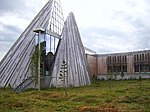


No hay comentarios:
Publicar un comentario
yesyukan